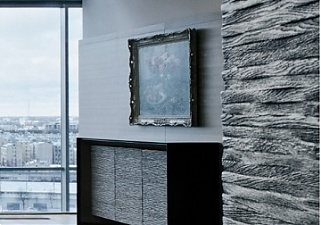Banks, Culture, Direct Speech, Financial Services, Latvia
International Internet Magazine. Baltic States news & analytics
Wednesday, 24.12.2025, 19:16
A Representative of Rietumu Bank – about trends in the Latvian art market
 Print version
Print version |
|---|
The Rietumu Bank art collection, numbering several hundred pieces of art, which represent the Latvian, European, Russian, and American schools, has been taking shape since 2000–2001. More than 80% of artworks are paintings, and the rest are graphics, sculpture, and applied arts. The main part of the collection is comprised of works of art created in the late XIX century and in the first half, as well as in the middle of the ХХ century.
“Buying criteria can be very subjective. Generally, the main criterion is very simple: people are expected to like a certain painting or sculpture, which is suitable for exhibiting in the Bank’s premises. In this regard, we adhere to the same principle as that of Deutsche Bank: “Art works with us.” Works of art are purchased at reasonable prices, while the investment aspect is not in the foreground. We like to buy such works of artists, which are really good and interesting.”
When commenting on the situation in the Latvian art market, he outlined a number of the most acute problems that slow down the development of this market:
“Firstly, solvent collectors’ interest is focused on a very narrow segment – literally on 10–20 names. Moreover, the main part of the artworks created by these authors has either been gathered in museums or already accumulated in private collections, and good offers are extremely rare, even at the best auctions.
Secondly, with regard to costs, the Latvian market has not yet fully recovered from the recession of 2008–2010. Again, the factor of low prices reduces the supply, because of this way of thinking: “why should I sell a good picture at a low price if this is not urgently necessary? Let it hang on the wall.”
Thirdly, the number of serious art collectors is, unfortunately, not increasing. On the contrary, it is gradually declining – and this is happening due to purely natural reasons.
Fourthly, it would be incorrect to assert that the society, including the younger generation, is not interested in visual art. However, the digital revolution, the internet and other post-industrial effects have led to the present situation, when young people and the urban middle class have practically no desire to possess an original piece of art at home or at work: a reproduction of art or an image placed on a screen is enough for them. Ownership of art has ceased to be regarded as a factor of prestige. And, as for the understanding that no computer image can replace the original, it can be stated that this understanding has not come yet.
Finally, one of the reasons for the current decline is the “impermeability” of the Latvian art market and the decrease of the population of the country: there are more and more artefacts, while our population is getting smaller.
State support (in an indirect form) could become a “lifeline” in the current situation – especially with regard to modern artists. That is to say, the share of funds that should be spent on artistic interior design should be clearly determined during the construction of, as well as when equipping new buildings and facilities for state or public needs. In addition, there are still not enough modern, high-quality exhibition spaces in Riga – and without this, any interaction with real, living art is simply impossible.”








 «The Baltic Course» Is Sold and Stays in Business!
«The Baltic Course» Is Sold and Stays in Business!

